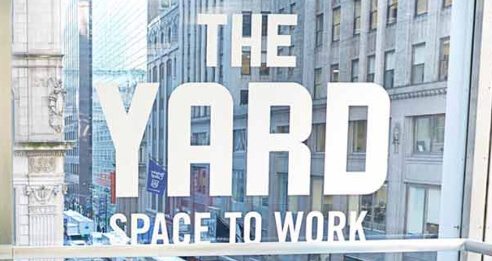
Largest Coworking Companies


Coworking as a phenomenon has blossomed exponentially over the past few years. Today, the competition in the sphere of coworking is fierce, and coworking space owners know that better than anyone else.
The number of coworking spaces keeps growing. According to Ergonomic Trends:
- The overall number of coworking spaces worldwide is 33,000, with the Asia Pacific region having the majority of them (11,592)
- The number of coworking spaces worldwide is expected to increase dramatically, reaching almost 50,000 by 2020.
- In 2017, roughly 542,000 people were working in coworking spaces in the U.S. That number is expected to reach 1 million by 2022.
As the number of coworking spaces worldwide is projected to grow, so is the competition in this sphere. Coworking space owners create new ways to attract the attention of mass audiences, providing yoga and meditation spaces, standing desks, ergonomic chairs, and healthy snacks and beverages.
No matter what strategies you use to attract new customers, social media platforms are the best place to advertise your coworking space. The biggest value of social media for coworking space owners, however, is social data that can be used to navigate potential customers to your coworking space.
Social data is the raw data that social media users publicly share. It includes but is not limited to:
- Demographics and biographical data (including language, location, etc.)
- Likes, shares, comments, hashtags as well as shared links
When it comes to helping potential clients find your coworking space, hashtags, comments, and tags. Let’s take a look at how you can use this social data to direct people to your coworking space.
When looking for the best coworking space, the first place people go to is Google and online review websites like Yelp. There, they get acquainted with online reviews, which are the first characteristic feature that separates good coworking spaces from bad ones.
These reviews are social data that you can put to use to help others find your coworking space. Here’s how:
1) If you want to draw more attention to your coworking space, start responding to online reviews, and not just the bad ones. Reportedly, 7 out of 10 people are more likely to change their opinion of a brand if the company responds to a review. You can emphasize the benefits of your coworking space in your reply, turning it into a kind of self-promotion:

2) You can use online reviews on your website to promote your coworking space. This is a great way to build up your credibility:

3) Starting a review tab on social media will help you get more attention to your coworking space. On Facebook, for instance, you can encourage the users to leave a review of your coworking space, and then use the results for marketing purposes (to attract even more people).

Social data in the form of online reviews, replies and other feedback can help you build a strong brand, and showing that you’re an active communicator will encourage others to try out the experiences that your coworking space offers.
A hashtag is the quickest way to navigate potential customers to your coworking space. Companies often use combinations of hashtags to navigate people to their pages on social media.
The proper choice of hashtags is what helped Flatfy, an international real estate company, grow from a startup to a company that operates in 30 countries around the world. The combination of #startup and #bootstrap helped them reach more people and expand to more countries as they continued growing.
As a coworking space owner, you can also benefit from a hashtag campaign to redirect more people to your social media profiles. However, choosing a hashtag should be a well-grounded decision based on thorough analysis.
Hashtags carry a lot of social data, as people use them to spread information. So, the choice of hashtags to promote your coworking space should be based on their performance. Flatfy’s hashtags did well because their performance was high:
#startup

#bootstrap

Using hashtag analysis tools will help you determine their performance and choose the best ones that you’ll use to navigate potential customers to your social pages.
Social data also describes the interaction between social media users. While comments, likes, and shares are the most obvious forms of interaction on social media, tags are another form of communication between social media users.
Tagging is one of the most effective tips for coworking on social media. When it comes to promoting your coworking space, tags do an amazing job at increasing your visibility. On Facebook, for instance, your post will have more reaches if you tag others:

If you often organize events at your coworking space, you can tag the participants. If you have some special offers, tag someone who helps you promote them. Any tag conveys social data, as it transfers information from one user to another. It’s a great way to become more visible online and attract potential clients.
Like any other big data, social data has limitations, as not every social media user shares information. Nevertheless, social data is still very effective for marketing purposes, as it can help your coworking space become more recognizable.
Using the above-mentioned social data techniques together will help you increase visibility, as they will help others find your coworking space more easily. In general, these techniques are aimed at targeting large numbers of people and help them easily navigate the space of social media to find the best coworking spaces.
Save your community manager 41 hours each week—learn how The Yard did it with cloud-based access control.
Read the Case StudyCoworking Market Demand
Free access to our best guides, industry insights and more.
